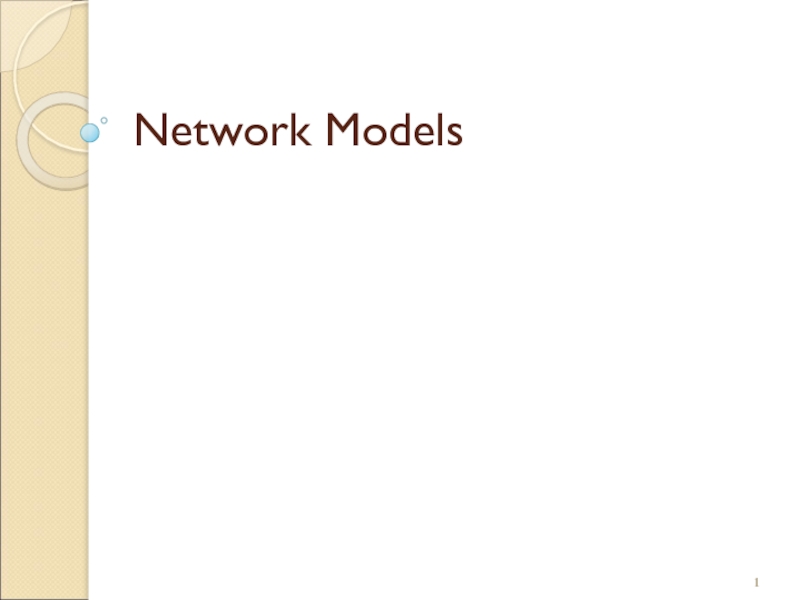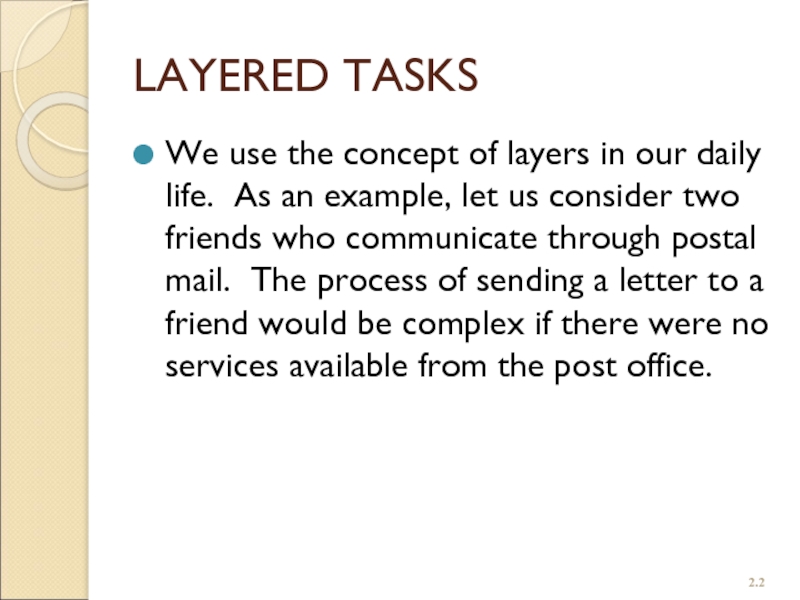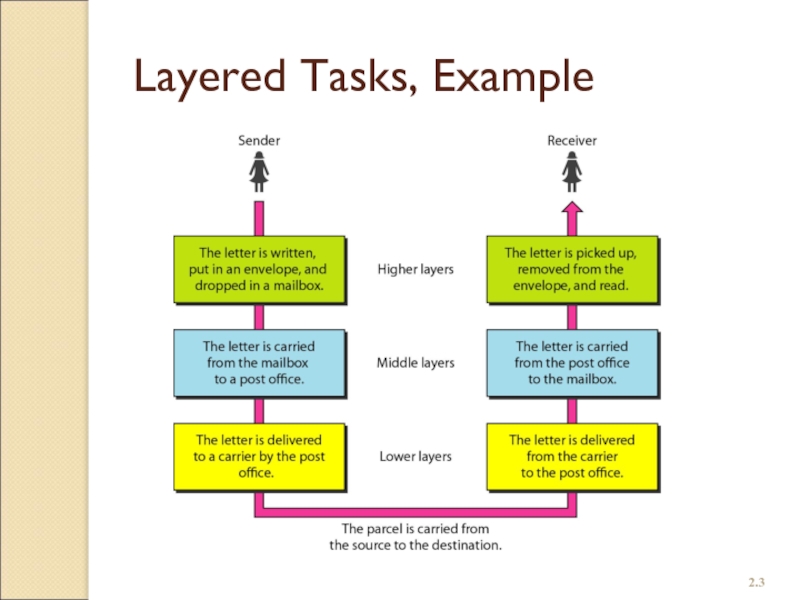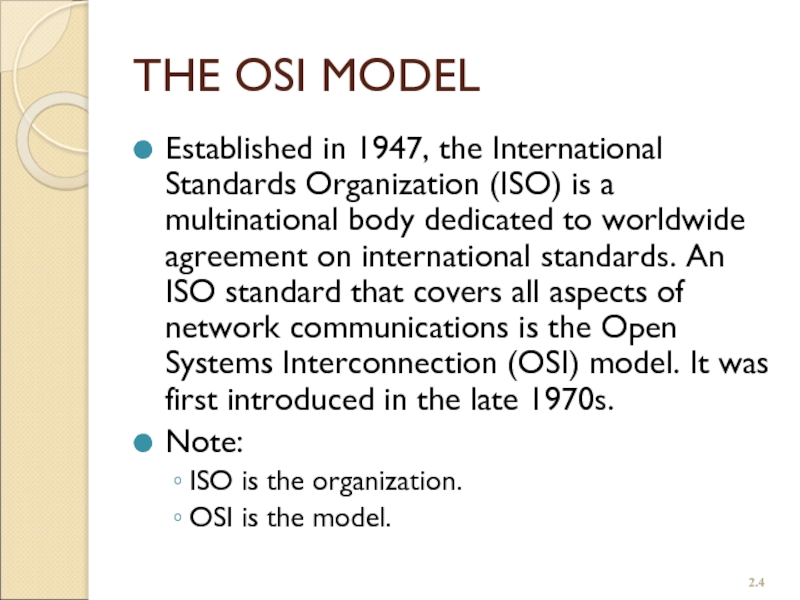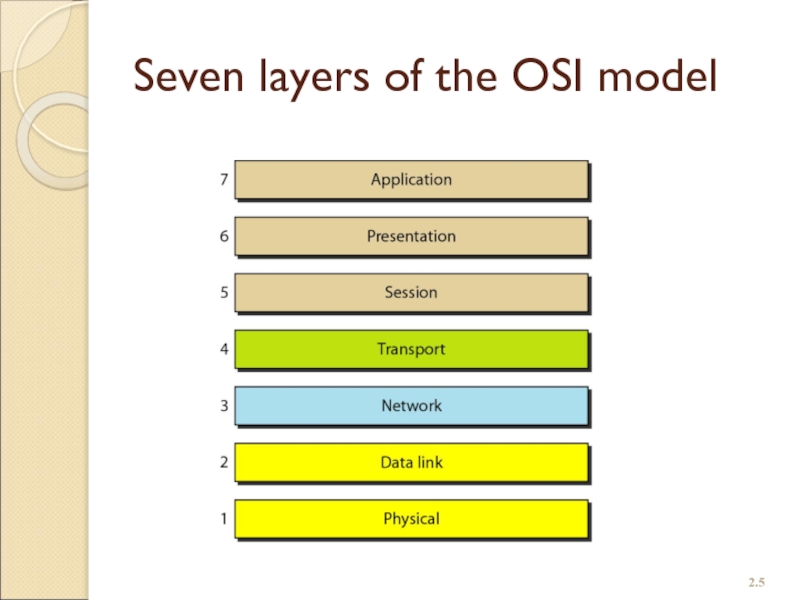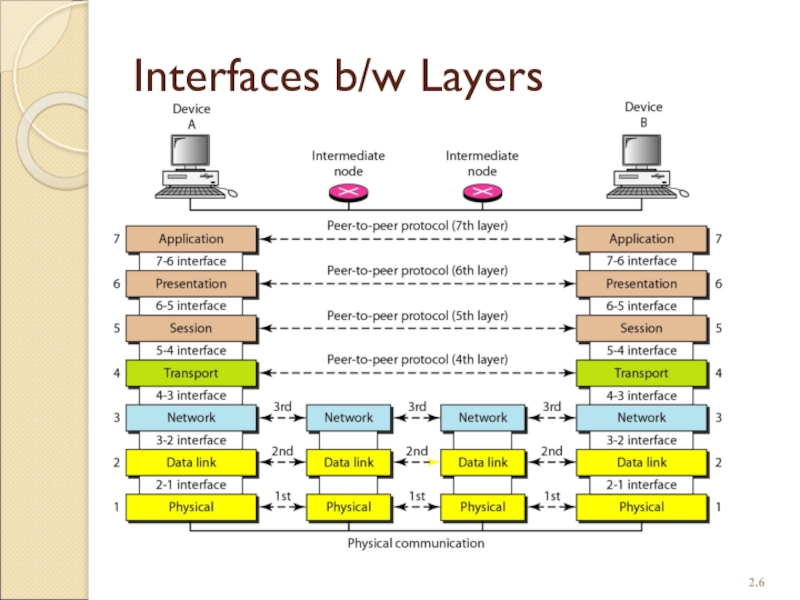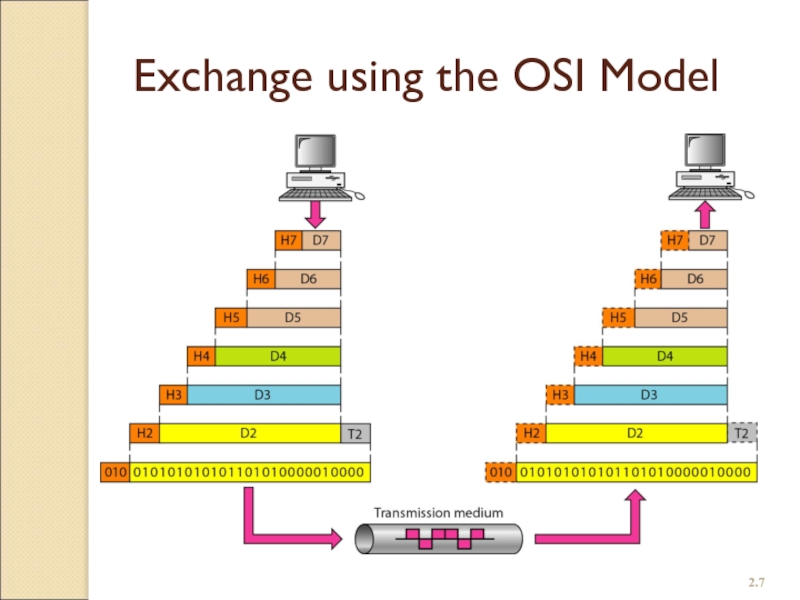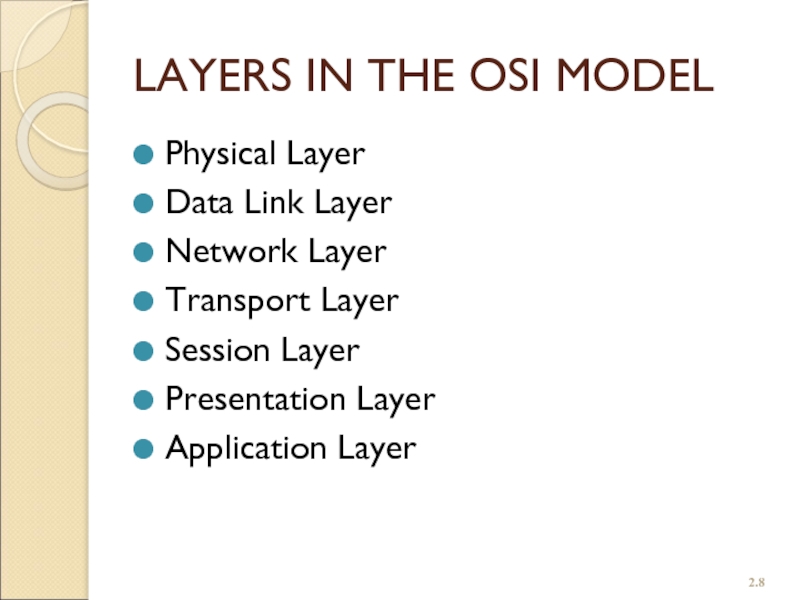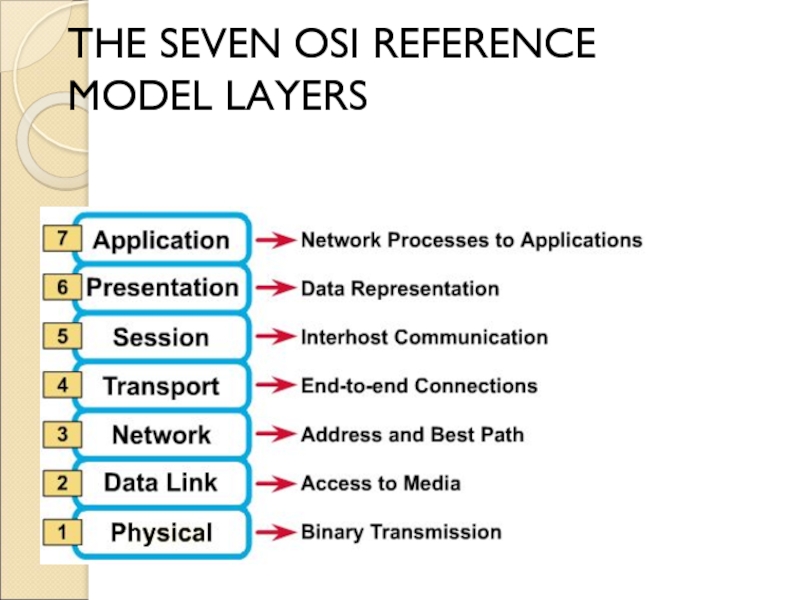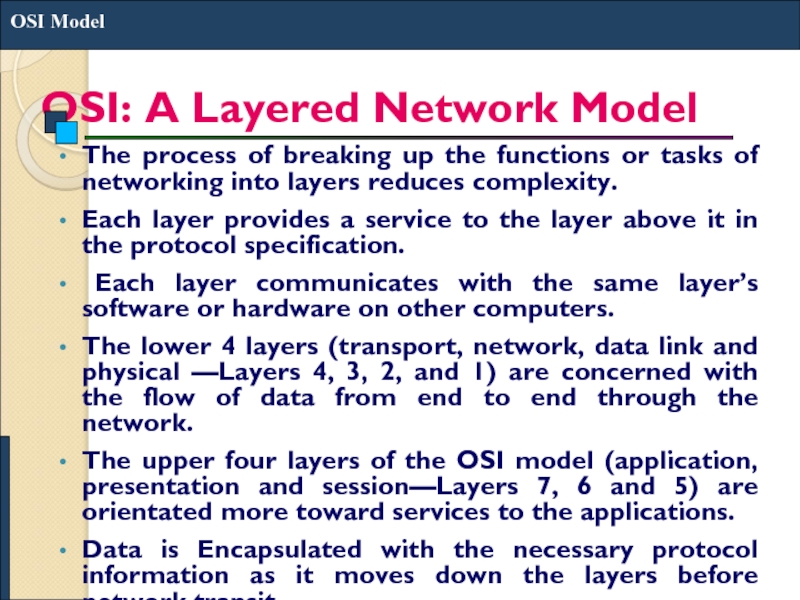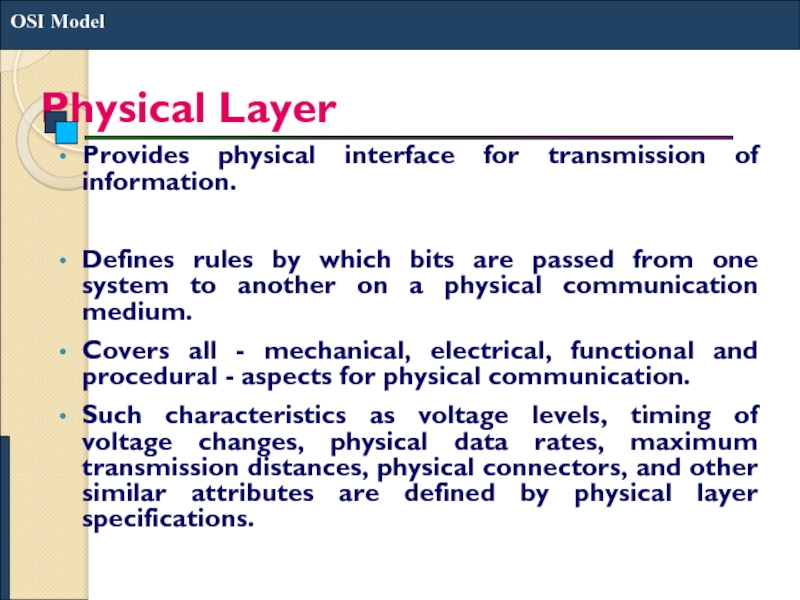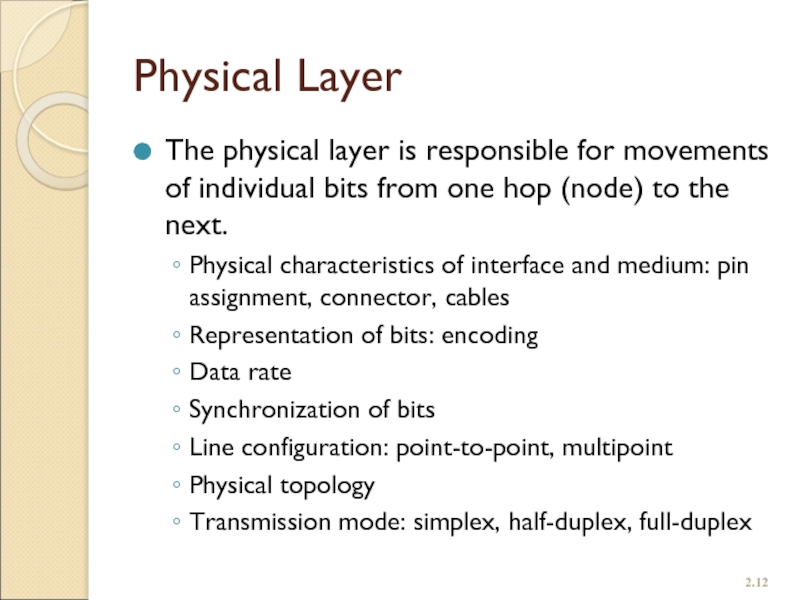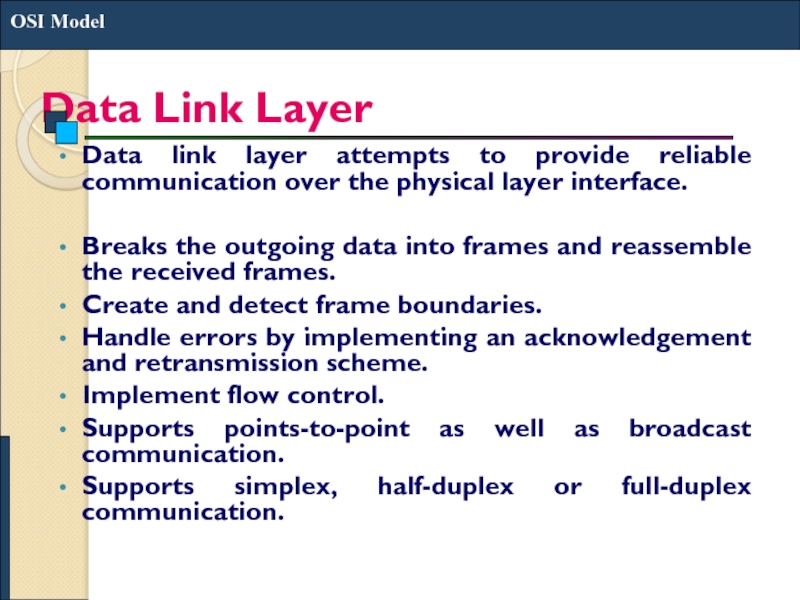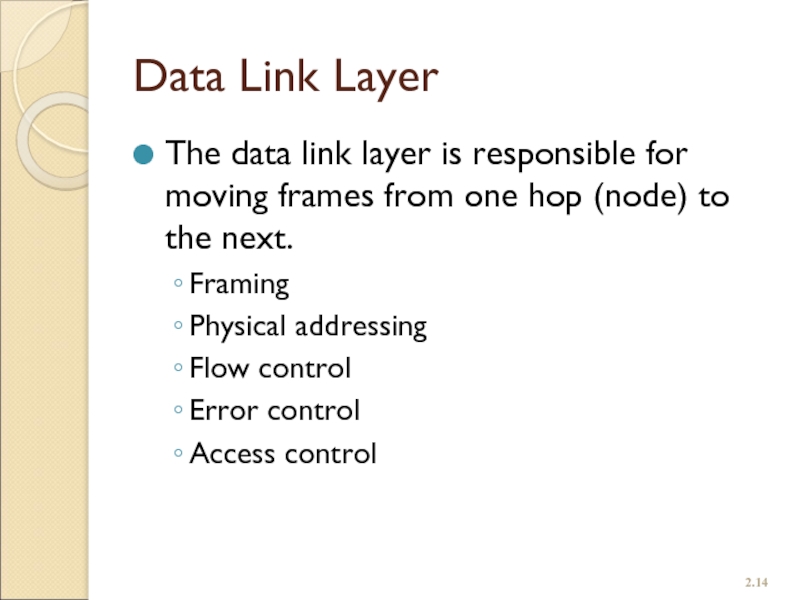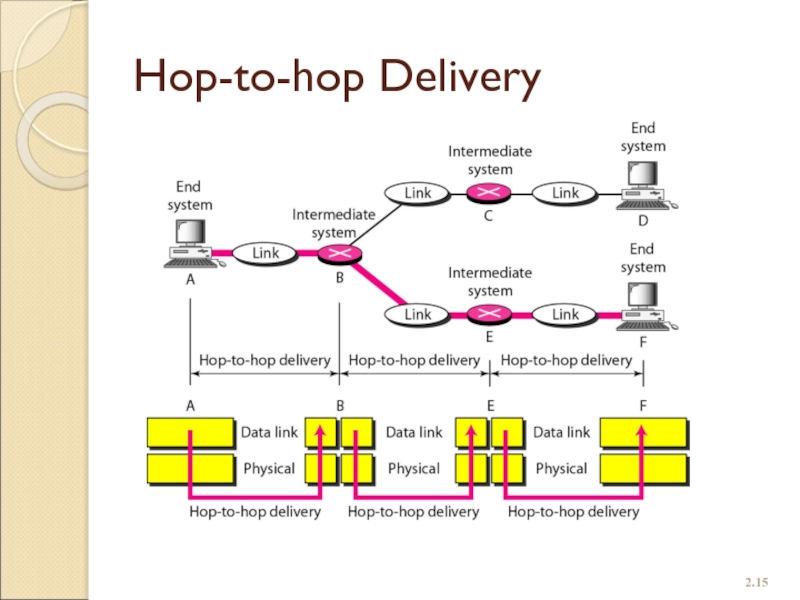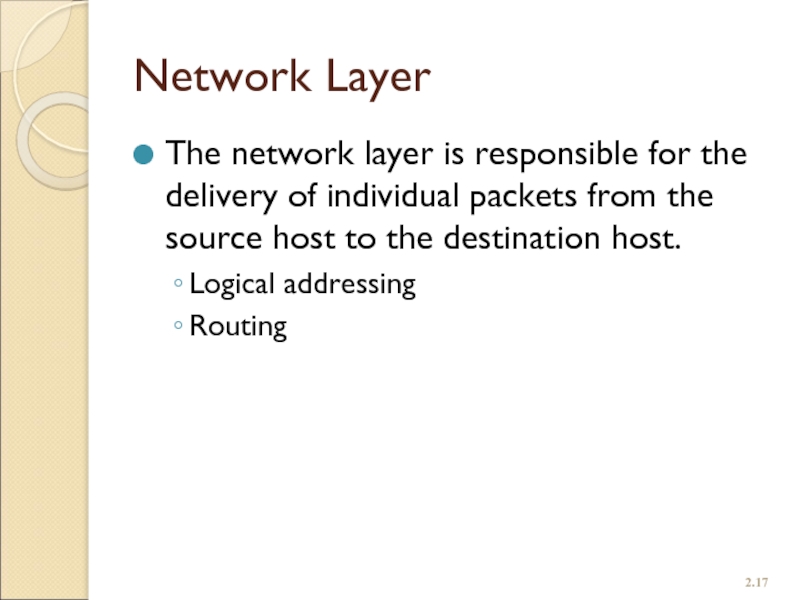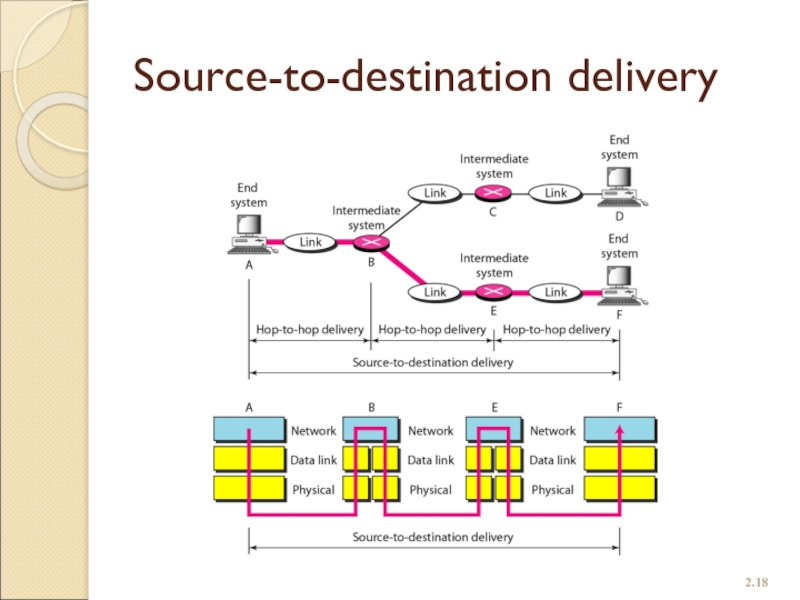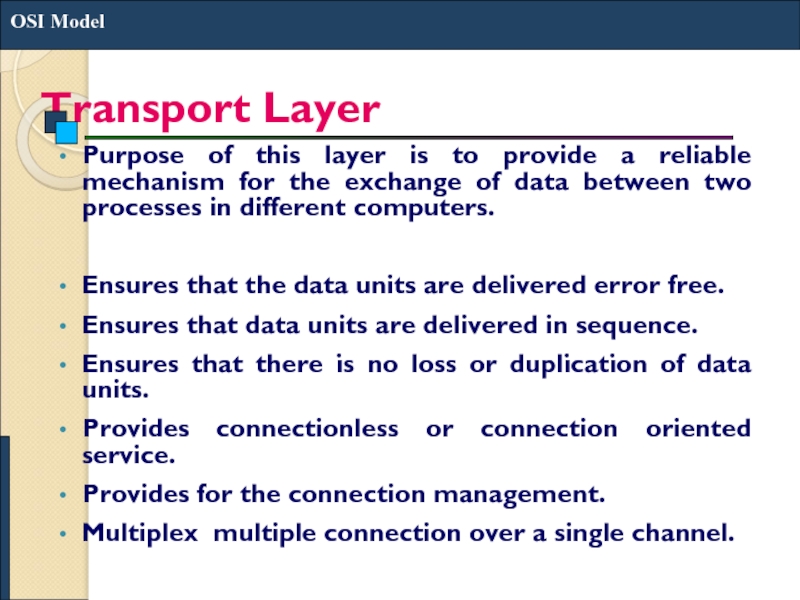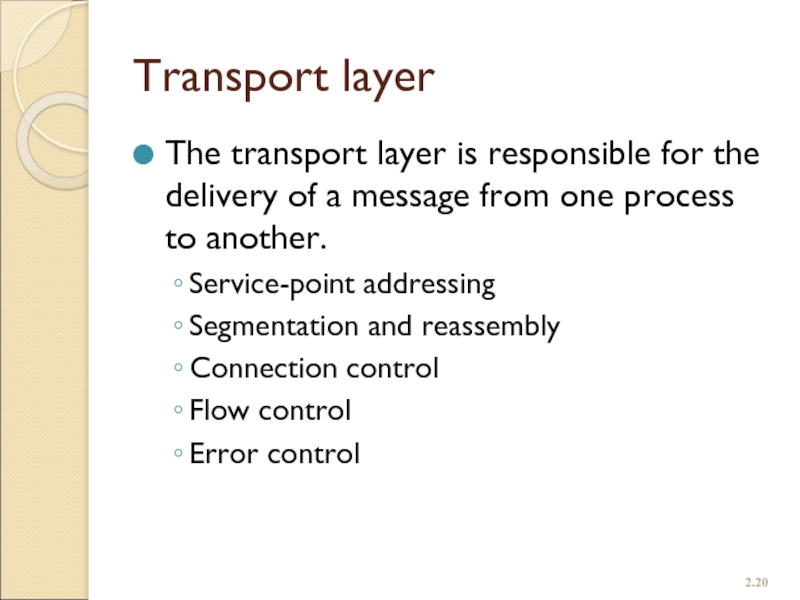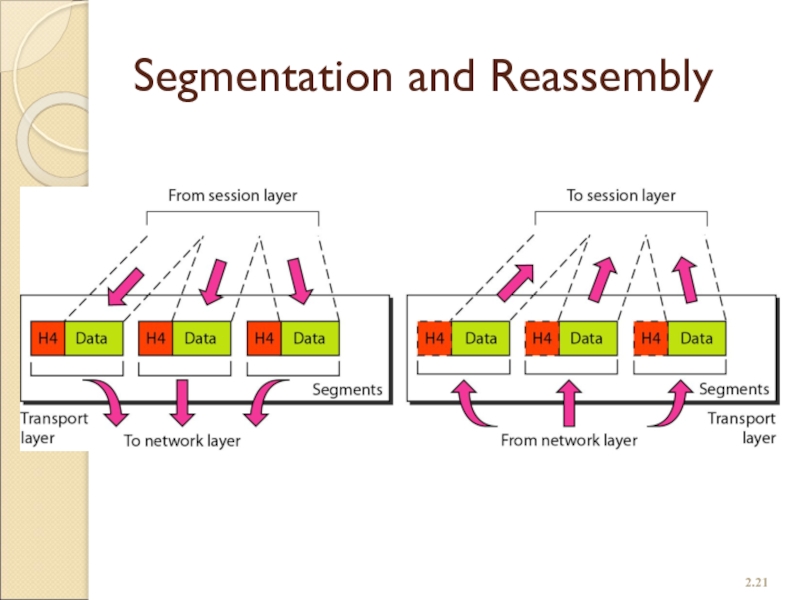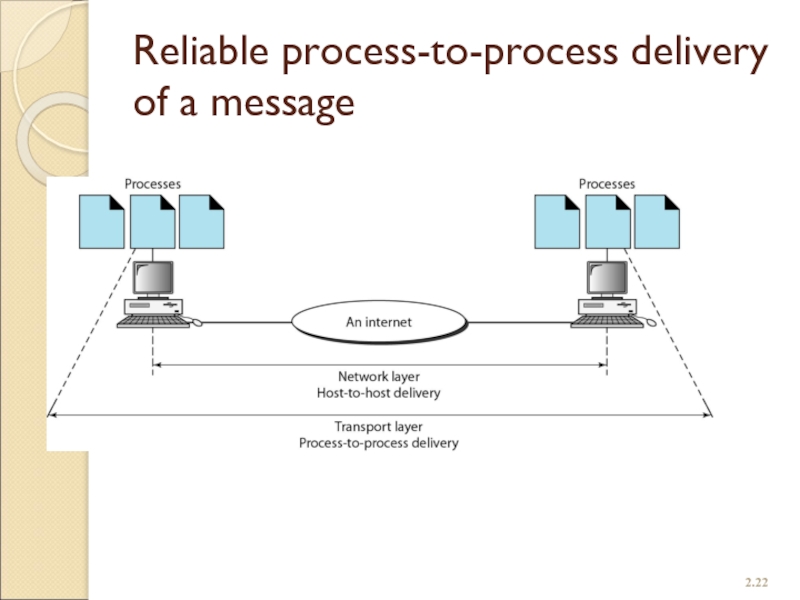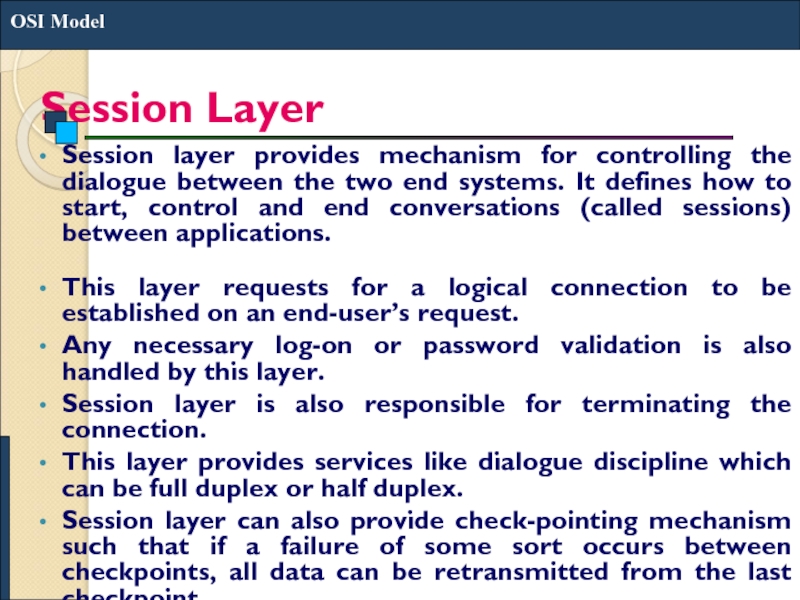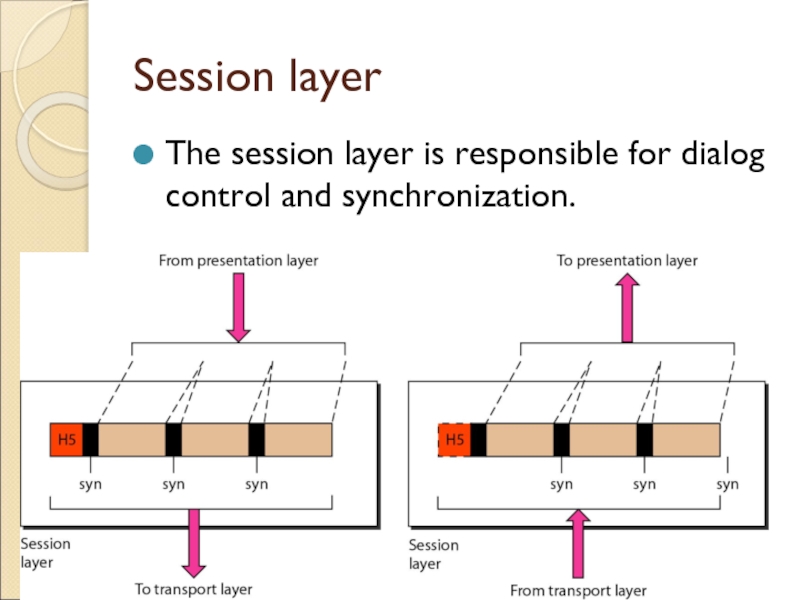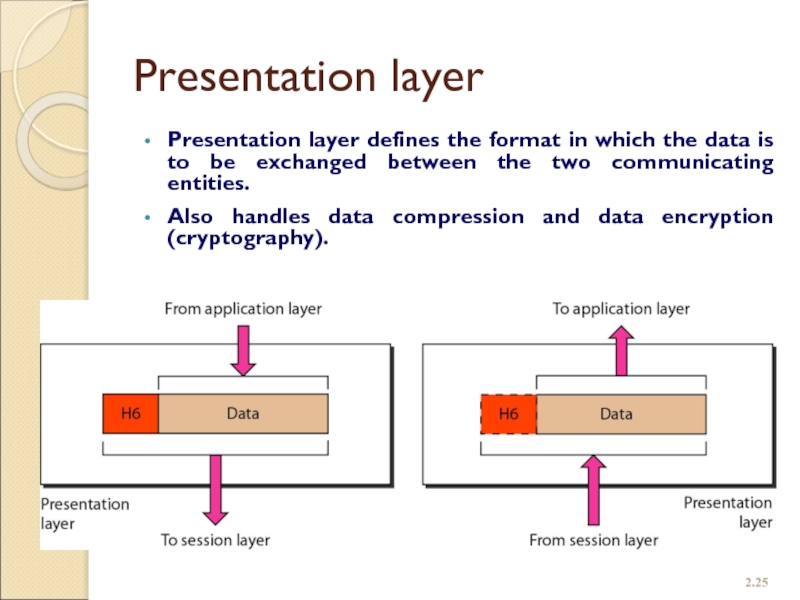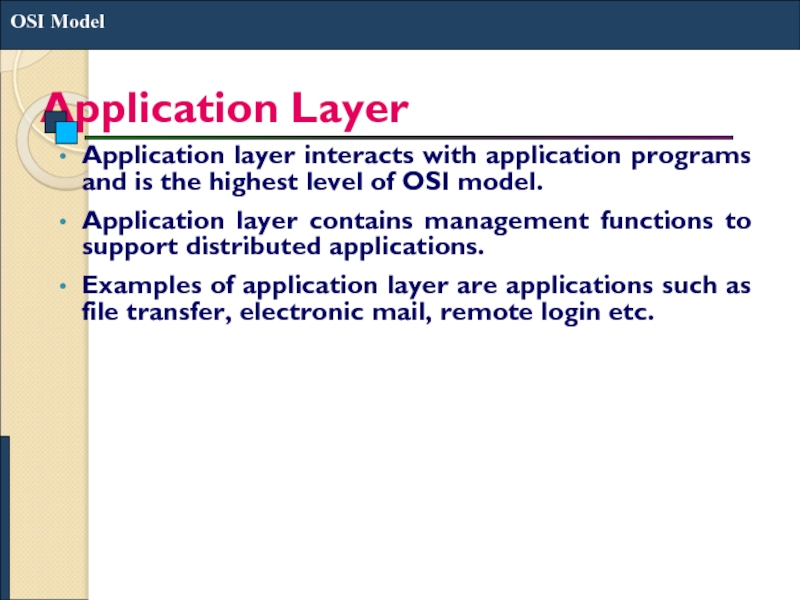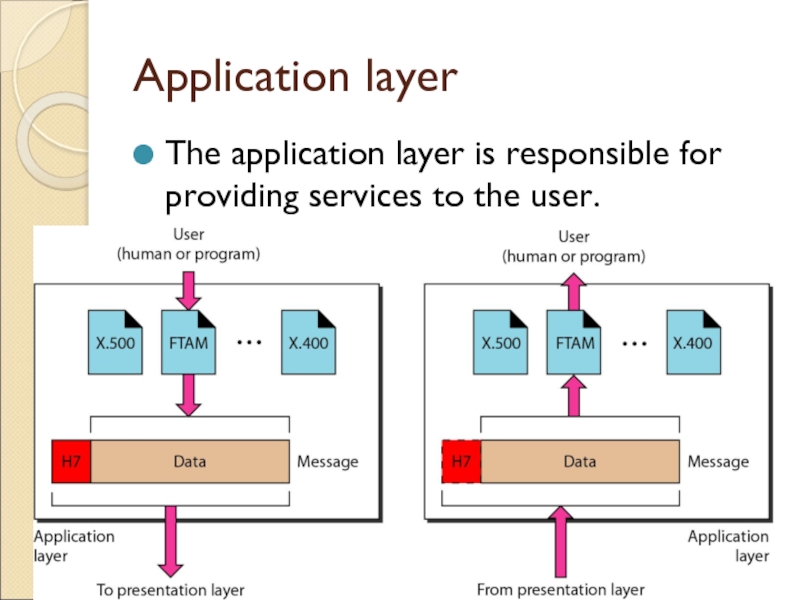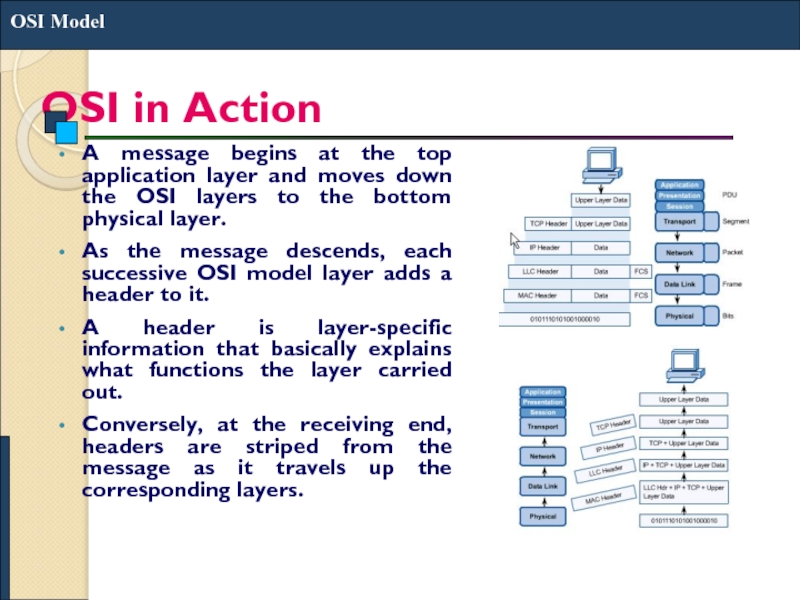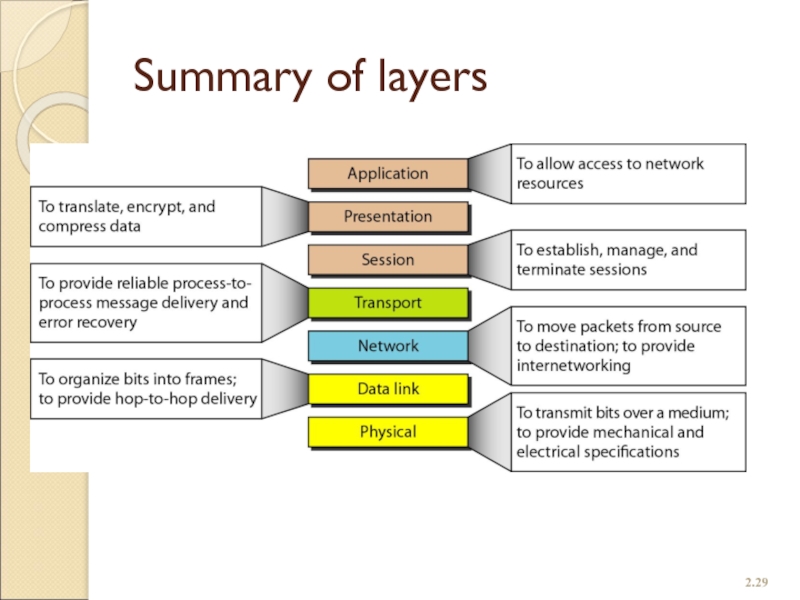- Главная
- Разное
- Дизайн
- Бизнес и предпринимательство
- Аналитика
- Образование
- Развлечения
- Красота и здоровье
- Финансы
- Государство
- Путешествия
- Спорт
- Недвижимость
- Армия
- Графика
- Культурология
- Еда и кулинария
- Лингвистика
- Английский язык
- Астрономия
- Алгебра
- Биология
- География
- Детские презентации
- Информатика
- История
- Литература
- Маркетинг
- Математика
- Медицина
- Менеджмент
- Музыка
- МХК
- Немецкий язык
- ОБЖ
- Обществознание
- Окружающий мир
- Педагогика
- Русский язык
- Технология
- Физика
- Философия
- Химия
- Шаблоны, картинки для презентаций
- Экология
- Экономика
- Юриспруденция
Network Models презентация
Содержание
- 1. Network Models
- 2. LAYERED TASKS We use the concept of
- 3. 2. Layered Tasks, Example
- 4. THE OSI MODEL Established in 1947, the
- 5. Seven layers of the OSI model 2.
- 6. Interfaces b/w Layers 2.
- 7. 2. Exchange using the OSI Model
- 8. LAYERS IN THE OSI MODEL Physical Layer
- 9. THE SEVEN OSI REFERENCE MODEL LAYERS
- 10. OSI: A Layered Network Model The process
- 11. Physical Layer Provides physical interface for transmission
- 12. Physical Layer The physical layer is responsible
- 13. Data Link Layer Data link layer attempts
- 14. Data Link Layer The data link layer
- 15. Hop-to-hop Delivery 2.
- 16. Network Layer Implements routing of frames (packets)
- 17. Network Layer The network layer is responsible
- 18. Source-to-destination delivery 2.
- 19. Transport Layer Purpose of this layer is
- 20. Transport layer The transport layer is responsible
- 21. Segmentation and Reassembly 2.
- 22. Reliable process-to-process delivery of a message 2.
- 23. Session Layer Session layer provides mechanism for
- 24. Session layer The session layer is responsible for dialog control and synchronization. 2.
- 25. Presentation layer Presentation layer defines the format
- 26. Application Layer Application layer interacts with application
- 27. Application layer The application layer is responsible for providing services to the user. 2.
- 28. OSI in Action A message begins at
- 29. Summary of layers 2.
Слайд 2LAYERED TASKS
We use the concept of layers in our daily life.
2.
Слайд 4THE OSI MODEL
Established in 1947, the International Standards Organization (ISO) is
Note:
ISO is the organization.
OSI is the model.
2.
Слайд 8LAYERS IN THE OSI MODEL
Physical Layer
Data Link Layer
Network Layer
Transport Layer
Session Layer
Presentation
Application Layer
2.
Слайд 10OSI: A Layered Network Model
The process of breaking up the functions
Each layer provides a service to the layer above it in the protocol specification.
Each layer communicates with the same layer’s software or hardware on other computers.
The lower 4 layers (transport, network, data link and physical —Layers 4, 3, 2, and 1) are concerned with the flow of data from end to end through the network.
The upper four layers of the OSI model (application, presentation and session—Layers 7, 6 and 5) are orientated more toward services to the applications.
Data is Encapsulated with the necessary protocol information as it moves down the layers before network transit.
OSI Model
Слайд 11Physical Layer
Provides physical interface for transmission of information.
Defines rules by which
Covers all - mechanical, electrical, functional and procedural - aspects for physical communication.
Such characteristics as voltage levels, timing of voltage changes, physical data rates, maximum transmission distances, physical connectors, and other similar attributes are defined by physical layer specifications.
OSI Model
Слайд 12Physical Layer
The physical layer is responsible for movements of individual bits
Physical characteristics of interface and medium: pin assignment, connector, cables
Representation of bits: encoding
Data rate
Synchronization of bits
Line configuration: point-to-point, multipoint
Physical topology
Transmission mode: simplex, half-duplex, full-duplex
2.
Слайд 13Data Link Layer
Data link layer attempts to provide reliable communication over
Breaks the outgoing data into frames and reassemble the received frames.
Create and detect frame boundaries.
Handle errors by implementing an acknowledgement and retransmission scheme.
Implement flow control.
Supports points-to-point as well as broadcast communication.
Supports simplex, half-duplex or full-duplex communication.
OSI Model
Слайд 14Data Link Layer
The data link layer is responsible for moving frames
Framing
Physical addressing
Flow control
Error control
Access control
2.
Слайд 16Network Layer
Implements routing of frames (packets) through the network.
Defines the most
Defines logical addressing so that any endpoint can be identified.
Handles congestion in the network.
Facilitates interconnection between heterogeneous networks (Internetworking).
The network layer also defines how to fragment a packet into smaller packets to accommodate different media.
OSI Model
Слайд 17Network Layer
The network layer is responsible for the delivery of individual
Logical addressing
Routing
2.
Слайд 19Transport Layer
Purpose of this layer is to provide a reliable mechanism
Ensures that the data units are delivered error free.
Ensures that data units are delivered in sequence.
Ensures that there is no loss or duplication of data units.
Provides connectionless or connection oriented service.
Provides for the connection management.
Multiplex multiple connection over a single channel.
OSI Model
Слайд 20Transport layer
The transport layer is responsible for the delivery of a
Service-point addressing
Segmentation and reassembly
Connection control
Flow control
Error control
2.
Слайд 23Session Layer
Session layer provides mechanism for controlling the dialogue between the
This layer requests for a logical connection to be established on an end-user’s request.
Any necessary log-on or password validation is also handled by this layer.
Session layer is also responsible for terminating the connection.
This layer provides services like dialogue discipline which can be full duplex or half duplex.
Session layer can also provide check-pointing mechanism such that if a failure of some sort occurs between checkpoints, all data can be retransmitted from the last checkpoint.
OSI Model
Слайд 25Presentation layer
Presentation layer defines the format in which the data is
Also handles data compression and data encryption (cryptography).
2.
Слайд 26Application Layer
Application layer interacts with application programs and is the highest
Application layer contains management functions to support distributed applications.
Examples of application layer are applications such as file transfer, electronic mail, remote login etc.
OSI Model
Слайд 28OSI in Action
A message begins at the top application layer and
As the message descends, each successive OSI model layer adds a header to it.
A header is layer-specific information that basically explains what functions the layer carried out.
Conversely, at the receiving end, headers are striped from the message as it travels up the corresponding layers.
OSI Model
